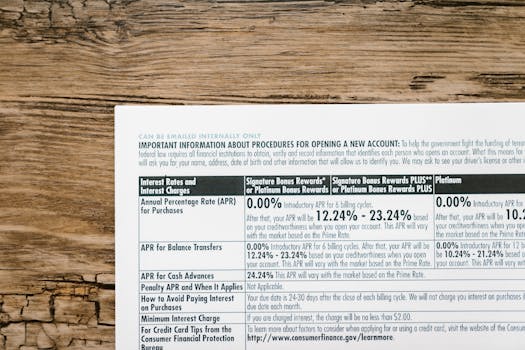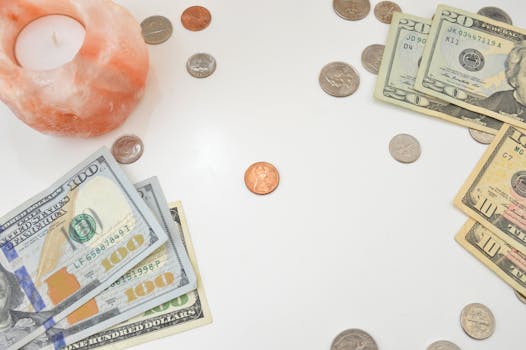Financial literacy
Understanding Compound Interest: The Quiet Power Behind Wealth
Compound interest works in the background, quietly building wealth year after year. Discover proven saving routines and see how small changes can transform your financial future.
Advertisement
Picture a snowball rolling down a hill, steadily gathering more snow as it moves. That’s what happens over time when your money grows thanks to compound interest—the concept at the heart of wealth-building.
Small, regular contributions can multiply your wealth through a process that seems almost invisible at first. Compound interest doesn’t shout; it works quietly, making diligent savers and investors smile years later.
If you want to demystify what makes wealth “compound,” get ready. This article lays out what compound interest is, how it works, why it matters, and how you can apply it in your financial journey.
Tracking Your Growing Dollars with Compound Interest
By understanding this financial rule, you’ll see exactly how regular savings transform into larger sums over time. Compound interest comes alive when you track your balances and recognize how interest earns more interest.
Knowing what triggers compounding empowers you to establish habits now that produce visible results later. Let’s break it down and discover clear steps that anyone can try, regardless of starting balance.
Interest That Multiplies: Beyond the Basic Math
If you deposit $1,000 at an annual rate of 5 percent, a year later you earn $50. The next year, you earn interest on $1,050. That’s the multiplying effect at work.
Mathematically, you just need to leave your money untouched to watch this upward spiral. The larger your base grows, the faster your interest snowballs. This explains why early savers witness bigger jumps in wealth decades later.
Experiment by putting $100 in a high-yield account. Every few months, log your statement balance. You’ll watch each payout feed into the next. The math reveals a visible pattern; seeing it boosts motivation.
Why Frequency Matters: Timing Compounding for Maximum Effect
The number of times interest compounds per year—daily, monthly, or annually—affects your results. More frequent compounding means your money grows a little faster, thanks to more frequent interest-on-interest events.
If you compare two savings accounts at the same rate—one compounding monthly, one annually—the monthly compounding always wins in the long run. The advantage becomes more dramatic as the years pass and the sums grow.
Pick the product that compounds more frequently. Even if the difference is “just” a few dollars per year, those extra dollars themselves will generate their own interest, turning small wins into bigger rewards.
| Account Type | Compounding Frequency | 5-Year Growth (on $5,000 at 5%) | Takeaway |
|---|---|---|---|
| Traditional Savings | Annually | $6,381 | Slowest growth, least interest earned overall. |
| High-Yield Savings | Monthly | $6,418 | Extra compounding adds more returns over time. |
| Money Market Account | Daily | $6,427 | Frequent compounding squeezes even more out of your rate. |
| Certificate of Deposit (CD) | Quarterly | $6,410 | Decent growth; best for set-and-forget savers. |
| Online Bank Promo | Monthly | $6,418 | Same boost if compounding frequency matches the high-yield account. |
Identifying Smart Strategies to Maximize Compound Interest
Set yourself up for faster compounding by choosing smarter behaviors and the right products now. Anyone can bump up their wealth growth just by changing where or how they save or invest.
Even tiny tweaks in regular deposits, interest rates, or compounding frequency can mean thousands of dollars over decades. Here’s action you can take today, illustrated with practical scripts and stories.
Applying Actionable Rules for Everyday Saving
Small, steady steps lay the groundwork for amplifying compound interest. A single phrase—”Set up automatic transfers every payday”—keeps earnings growing, with zero need to remember each time.
Another powerful nudge: “Round up debit transactions and funnel change into savings.” Automation ensures your money keeps working, even when you’re distracted or busy.
- Start with auto-transfer: Schedule $25/week to savings; it feels painless yet builds a habit that grows wealth quickly with compound interest over time.
- Increase deposits with every raise: When income rises, bump your automatic savings by $10. This tiny adjustment stacks more interest on your expanding base.
- Pick high-yield accounts: Compare options regularly. Switch banks or credit unions to chase higher rates—those small differences lead to more compounding results.
- Reinvest dividends: If you own mutual funds or stocks, check the box to reinvest earnings automatically. Dividends earned should buy more shares so interest can multiply.
- Check compounding frequency: Ask, “How many times yearly does this compound?” Pick the option with more frequent intervals, even if rates match.
Practice these scripts for three months. Notice the difference in account balances, then raise your auto-transfer as comfort grows. Let compounding work harder for you every year.
Spotting Traps That Sabotage Compounding Quickly
Miss a few months of savings, and your future interest tally shrinks. Don’t let temptation chip away: “I’ll just skip this deposit—just once” can erode a decade of growth.
Never withdraw your compounding balance if possible. Treat it as untouchable, even if a tempting sale or quick vacation pops up. More time means more exponential benefit from compound interest.
- Avoid pausing or halting auto-transfers. Broken compounding chains flatten your returns, so keep everything automatic—even during temporary cash crunches.
- Resist early withdrawals. Pulling money out for impulse buys nips the snowball effect before it hits full strength. Wait for major milestones or emergencies only.
- Ignore minor interest rate drops. Don’t panic-switch accounts for a few tenths of a point. The time spent with money compounding matters more than tiny rate differences.
- Skip “one-time” splurges justified from your savings pool. Even single events interrupting compounding create long-term losses in future earnings.
- Don’t chase bonuses if it ends regular contributions. A temporary perk doesn’t replace the ongoing magic of compounding’s steady effect. Consistency trumps big, sporadic deposits.
Keep your habits steady. Run each spending decision by a simple checkpoint: “Will this choice shrink my future compound interest or give it more time to grow?” Stay focused on your long game.
Building Wealth Over Decades with Compound Interest Habits
Committing early and prioritizing consistency are two proven tactics. When you choose today to set your money on an accelerating path, each day ahead works in your favor, not against.
Try the following methods to amplify your compound interest results from your early twenties through your retirement years, regardless of starting income or economic background.
Scheduling Regular Contributions for Momentum
Dana, a recent college graduate, tells her bank: “Transfer $50 from my paycheck into savings every Friday.” Over 40 years, with compound interest, these small transfers can snowball into six figures.
For others, an employer’s 401(k) match does the trick. John watches as his employer deposits extra dollars alongside his each payday—a built-in way to multiply growth without thinking about it.
Apply the phrase: “I treat savings as an unbreakable bill. It comes out first, always.” Habit builds discipline, which then supercharges compounding across your lifetime.
Reinvesting Earnings to Maximize Each Dollar
Mutual fund investors can boost returns by checking the “reinvest” box. Each dividend or interest payment purchases more shares, creating new future interest and bigger growth potential.
Stocks with dividend reinvestment plans (DRIPs) make it simple. Instead of taking payouts in cash, buy more shares and watch growth speed up from there. Compounding thrives on recycling every dollar forward.
“I want every penny I earn to earn even more.” This approach puts every dollar to work, year after year. Reinvested earnings twin your original investment’s power.
Choosing the Right Tools to Accelerate Compounding
Account types, fee structures, and rate differences all influence your total results with compound interest. Picking the right tools makes compounding not just possible, but powerful.
Review your current savings and investing vehicles. Watch for hidden fees or restrictive terms that could quietly drag down your results over decades.
Comparing Accounts for Better Compound Gains
Shop for high-yield savings, money market, and certificates of deposit with the exact wording: “How frequently do you compound interest, and what’s your annual yield?” Don’t assume all accounts treat your deposits equally.
Banks and online platforms offer calculators to project results in advance. Change the compounding frequency value and watch projected balances climb as you adjust for more frequent interest periods.
Pick no-fee or low-fee options. Every extra dollar left in your account multiplies daily, so minimizing costs is another secret to compounding’s quiet power.
Choosing Compound Interest Investments with Clear Growth Paths
CDs lock in rates but require patience—breaking one early usually means a penalty that eats up accrued interest. Treasury bonds can compound twice yearly, offering steady, guaranteed growth when held to maturity.
Employer retirement plans amplify compounding with tax advantages. Specify: “I want pre-tax contributions and an automatic employer match.” Every little match you receive is fuel for your compound interest engine.
Compare the projected growth of stocks, bonds, and bank products in a spreadsheet. Diversification gives you multiple compounding avenues and cushions against slow periods in any single tool.
Protecting Compounding Results for the Long Haul
Once compound interest is working for you, don’t let unexpected withdrawals or poor planning sabotage the results. Develop habits and rules that shelter compounding from avoidable disruptions.
Set boundaries around your compounding pool, even when life throws surprises or opportunities your way. Guard it like you would a personal time capsule for your future self.
Building Barriers Around Compounding Funds
Put savings in an account that’s slightly harder to access, such as a limited-withdrawal online bank. It’s a safeguard, so you pause before removing money meant for compounding.
Set a family policy: “Only touch this account for job loss or medical emergencies.” Write it down and share with loved ones so everyone buys in and respects your compounding goals.
Respond to sudden expenses by asking: “Can I cover this without dipping into my compounding pool?” Having a backup fund for emergencies keeps long-term growth intact.
Tracking and Celebrating Compounding Milestones
Create visual reminders—charts, progress bars, or savings trackers in your favorite app. Each milestone reinforces the invisible work happening behind the scenes with compound interest.
Whenever your account balance rounds another hundred or thousand, mark the occasion. Mike cheers whenever his retirement savings grow by another $500, because he knows compounding did much of that lifting.
Saying: “I’m celebrating my progress, not just the end goal,” keeps motivation high and prevents the temptation to raid the account. Routine celebrations create emotional rewards alongside financial results.
Putting Compound Interest to Work: Takeaways Worth Your Attention
Compound interest quietly multiplies each dollar you save or invest, with most of the growth invisible until years have passed. Start early, stay consistent, and automate what you can for stress-free results.
Choosing high-frequency, low-fee accounts and reinvesting all earnings gives you an edge—small actions add up in dramatic ways with the help of compounding’s natural momentum over time.
Apply the tips and scripts here, and revisit your accounts often to celebrate progress. Protect your compounding process, respect its rules, and let time do the heavy lifting for your financial well-being.





